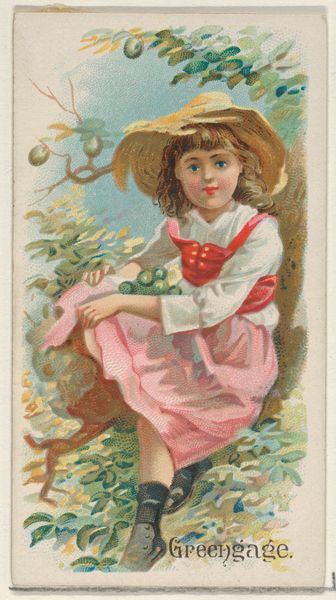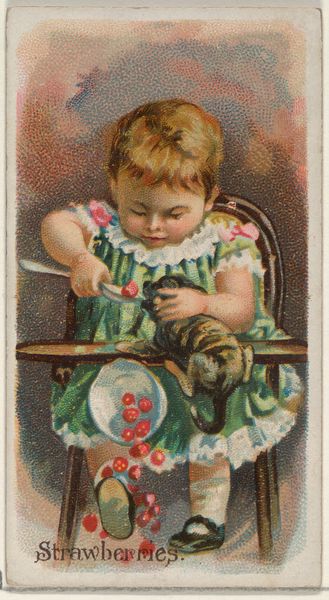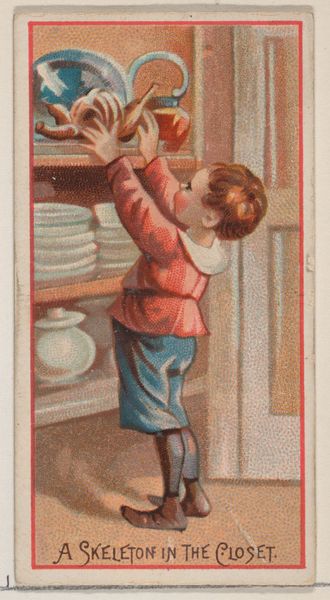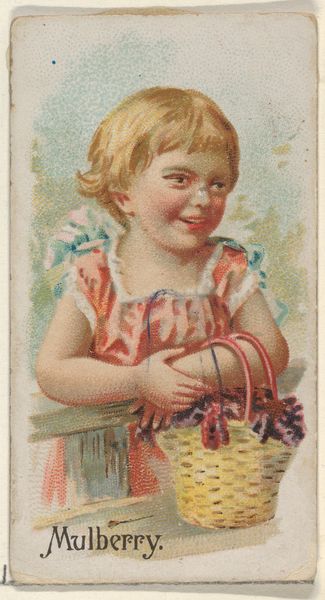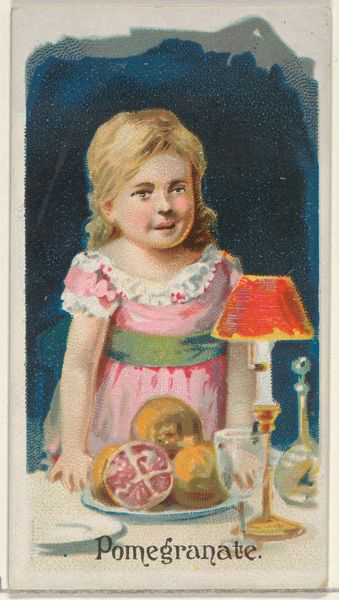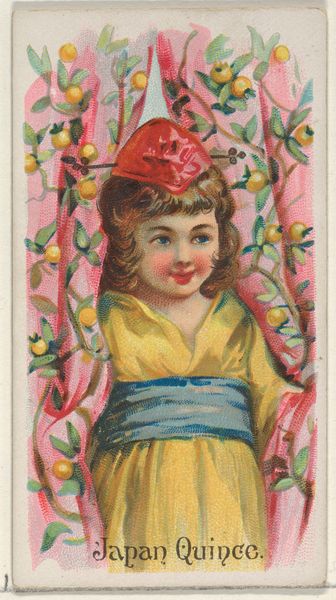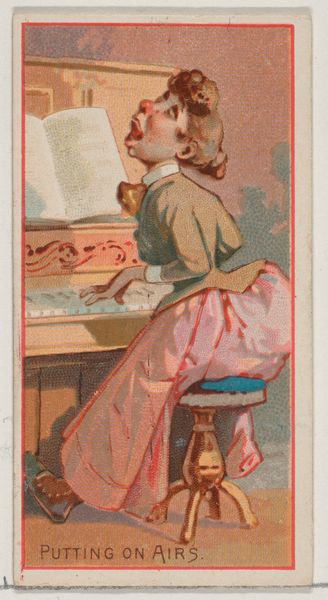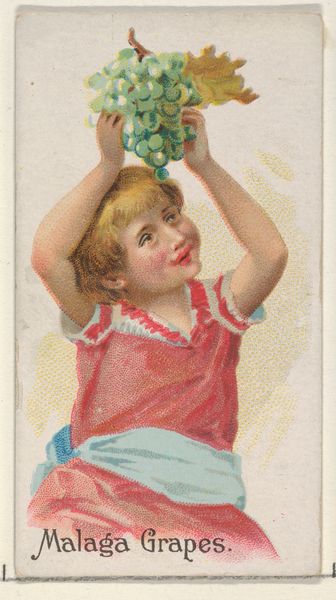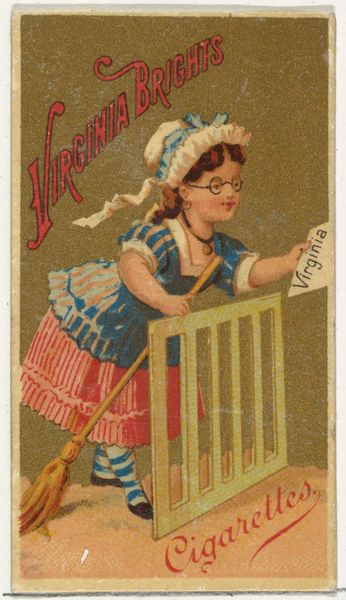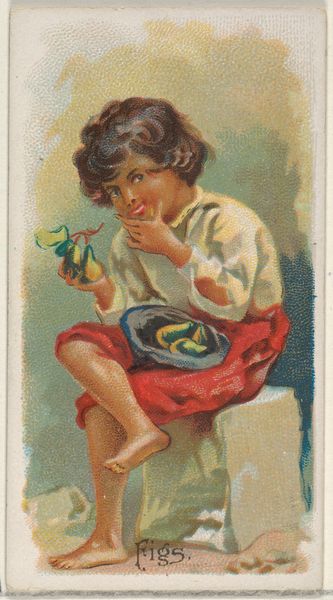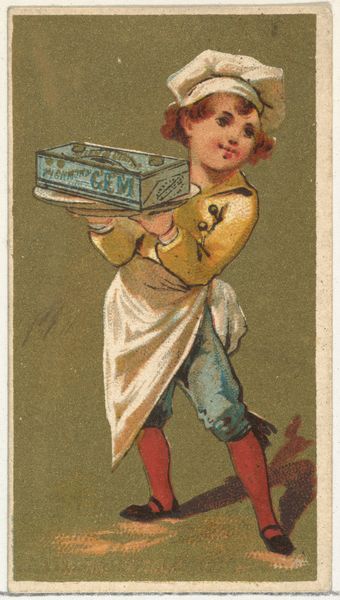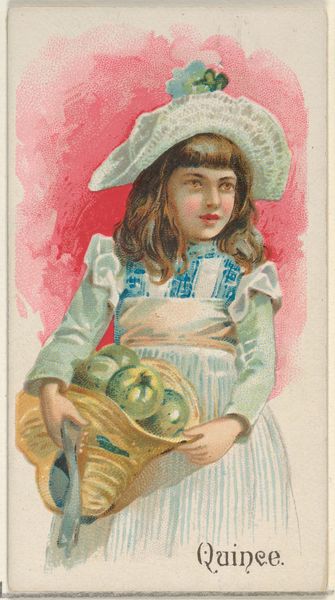
Peach, from the Fruits series (N12) for Allen & Ginter Cigarettes Brands 1891
0:00
0:00
Dimensions: Sheet: 2 3/4 x 1 1/2 in. (7 x 3.8 cm)
Copyright: Public Domain
Editor: This is "Peach," from the Fruits series by Allen & Ginter, created around 1891. It's a print, a small card actually. I’m struck by how this innocent scene—a child reaching for peaches—was used to sell cigarettes. What’s your take on it? Curator: It's fascinating, isn’t it? These trade cards, particularly the "N" series, are interesting relics of consumer culture. Consider the late 19th century, the rise of mass production, and the need to brand products. This isn’t just a charming portrait; it’s a calculated strategy. How does seeing this image change how you think of advertising and art? Editor: It feels a bit… exploitative, honestly. It's using childhood innocence to push a product that’s known to be harmful. Were people aware of this contradiction at the time? Curator: Awareness existed, certainly. However, tobacco was heavily intertwined with societal norms and economic prosperity. The cards became collectible items, transcending mere advertisement. Think of baseball cards today, a public facing advertisement for products and institutions that we also collect and value. Allen & Ginter used the image of idealized American life—beauty, childhood, nature—to normalize tobacco consumption. How might class or race intersect with this idea of an idealized American life? Editor: So, it's less about the peaches and more about creating an appealing lifestyle association? It suggests that if you buy these cigarettes, you're buying into this wholesome, idyllic scene? Curator: Precisely. The peaches represent abundance, a certain genteel existence. It presents a lifestyle for the aspiring consumer, one which could be adopted irrespective of any social cost. It served to distract people from the more troubling issues present at the time, such as immigration, industrialization, worker rights and monopolies. Editor: This has made me consider how even seemingly harmless art can perpetuate broader societal issues. I'll never look at vintage advertising the same way. Curator: Indeed, it allows us to question the relationship between commercial images, power, and public perception. It’s important to investigate all the historical complexities associated with cultural material such as this trade card.
Comments
No comments
Be the first to comment and join the conversation on the ultimate creative platform.

